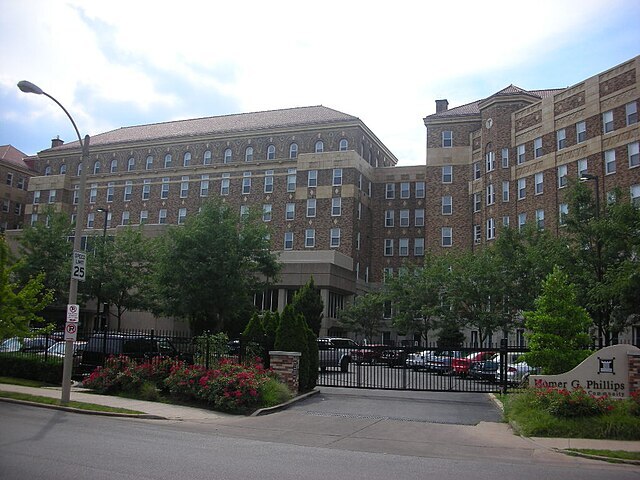
Attribution: Homer G. Phillips. Painting by Vernon Smith [Missouri Historical Society, St. Louis, Objects Collection, 2016-058-0001]. Use permitted for educational purposes.
Unless you are a long-time St. Louis area resident, you may not know that name, but from 1937 that building and name have been synonymous with healthcare, education, and racial equity, and the effects of what happened in that building have changed the country and world with a long legacy of healthcare providers and pioneering treatments nurtured there.
Through the 1910s, the Black population of St. Louis was booming as people were moving into cities to take advantage of new industrial jobs.
As the population of the city grew, many were experiencing the effects of segregation. The city’s only public hospital, City Hospital, was segregated and only accepted white patients and staff.
In response to the need, Black community leaders and advocates persuaded the city to take action. The city purchased a 177-bed medical facility in 1919 which was woefully inadequate for St. Louis’s 70,000 Black residents.
Seeing the need, a local lawyer Homer G Phillips advocated for a bond issue to provide for the construction of a new hospital to serve Black St. Louisans.
Although the bond issue passed, the city aldermen were determined to open a new segregated wing of City Hospital.
Knowing that the wing would be too small, and the hospital was in a white neighborhood and far from the people who needed it, Phillips continued to advocate until 6.3 acres were purchased and construction began on what would be called City Hospital #2 in The Ville, the vibrant center of St. Louis’s Black community.
The hospital was formally opened in February of 1937, 14 years after the bond issue had passed. Phillips did not live to see the dream that he fought for realized.
He was shot and killed before construction even began in a murder that remains unsolved. In 1942 the hospital was renamed for the man who fought for accessible public healthcare for Black residents of St. Louis.
The true lasting legacy of Homer G. Phillips Hospital, however, is far more than a building and name. Less than a decade after it opened, the hospital was one of the 10 largest public hospitals in the country.
One-third of all the graduates of America’s two Black medical schools served their residency at Homer G. Phillips and despite chronic underfunding from the city, the hospital pioneered new treatments in everything from wound care to IV feeding.
The hospital trained and taught nurses through its nursing school and was the training site for thousands of other medical professionals like X-ray technicians and phlebotomists. These professionals went on to serve across the country and around the world.
The world also came to the hospital as its staff welcomed medical staff from around the world who were excluded from serving in white hospitals.
Homer G. Phillips Hospital began accepting patients of all races in 1955 when the city’s healthcare system was desegregated.
Phillips’ continued to influence medical education as in the 60s every department was headed by a physician who also taught at the medical schools of SLU or Wash U.
 The city officially and abruptly closed the hospital in 1979, though in the wake of community protests, the building was soon named a St. Louis Landmark then placed on the National Register of Historic Places.
The city officially and abruptly closed the hospital in 1979, though in the wake of community protests, the building was soon named a St. Louis Landmark then placed on the National Register of Historic Places.
The building was vacant for more than a decade until the hospital’s community clinic building was reopened, the nursing school was converted into a children’s home, and ultimately the main building was renovated to become an independent living facility.
The legacy of this community institution lives on in the many babies born there, the many lives saved there, and the many medical professionals trained there.
There is still a dedicated organization of nurses who are alumna of the nursing school at Homer G. Phillips Hospital.
